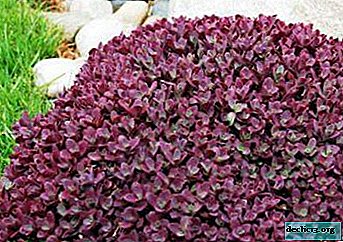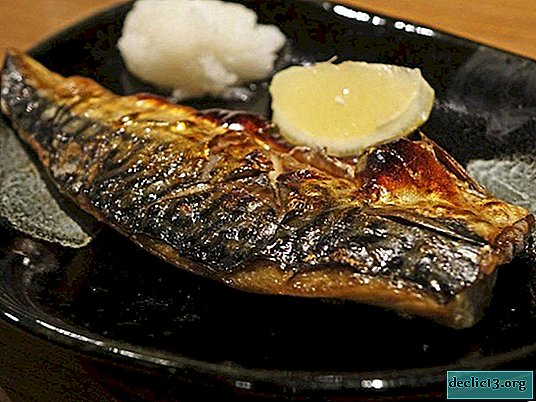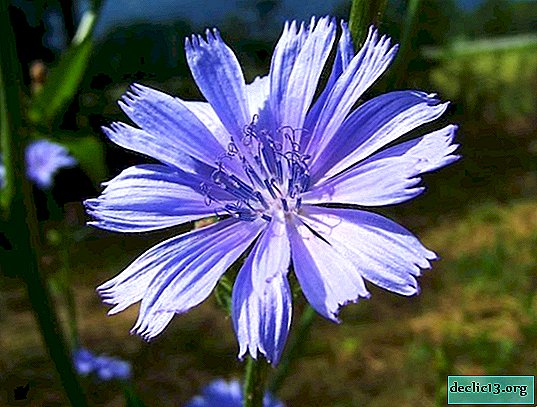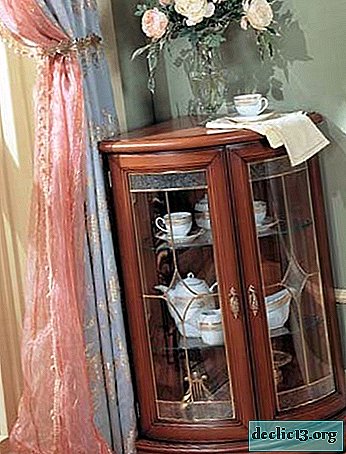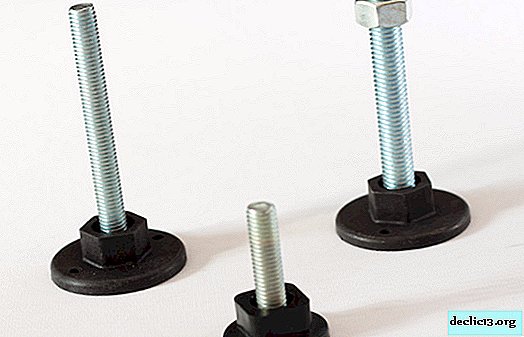Cacti from the genus Gymnocalicium - a living decoration of the interior. Description of species and content rules
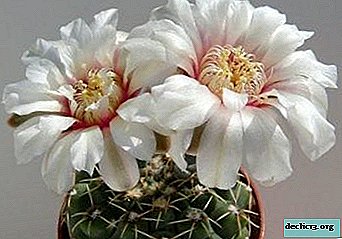 Plants from the cactus family are becoming increasingly popular among amateur gardeners. These spiky succulents organically fit into the interior of any room.
Plants from the cactus family are becoming increasingly popular among amateur gardeners. These spiky succulents organically fit into the interior of any room.
Among them, a cactus hymnocalycium occupies a worthy place. In our article, we will consider the varieties of this succulent, the rules for caring for it and the methods of reproduction. You will find out when and how this succulent blooms. You can also watch a useful video on this topic.
Botanical Description
Gymnocalycium belongs to one of the genus plants of the cactus family. This genus has from fifty to eighty different species, many of which have long become indoor plants.
Attention: The name of the cactus comes from the Greek words: "naked" and "calyx", due to the smooth flower tube that does not have hairs and thorns.Cactus grows on the plains and in the mountains at an altitude of 1000 m on well-sodded soil among grass and stones. Areas of South America are considered to be the birthplace of the hymnocalycium:
- the provinces of Rio Negro, Chubut, in southern Argentina;
- Southern and Eastern Bolivia;
- Paraguay;
- some part of Uruguay;
- Southern Brazil
Most plants of the genus Gimnocalicium are spherical cacti with a slightly flattened shape.. This is a low cactus, the diameter of which is twice its height and is only 4 to 15 cm. The stem is painted in gray-green or brown-green, rarely almost brown.
Among cultivated species, you can find a cactus with a yellow or red stem - these are chlorophyll-free specimens.
Popular types of Gymnocalycium: descriptions with photos
There are about eighty species of cacti of this genus.. Among them there are very unusual and beautiful specimens.
Japanese

This cactus looks very unusual in appearance. It was bred by Japanese botanists who conducted experiments, crossing mutant cacti among themselves. Thus, chlorophyll-free hymnocaliciums of red, yellow, orange and burgundy were obtained.
Naked (nude)

This type of cactus looks like a flattened ball with wide swollen ribs. The surface is smooth, dark green with rare areoles on which curved spines grow a little longer than a centimeter of gray-brown color in bunches. A beautiful cream or white flower blooms at the top of the succulent.
Balda

This is one of the most popular types of hymnocalicium, due to its unpretentiousness and ease of care. The specimen grows up to 10 cm in height and up to 7 cm in diameter. Ribs low and wide, divided into tubercles. It has thin radial spines of brown color. Releases buds of red shades. Even very young plants can bloom. Flowers of this species are considered one of the most beautiful among hymnocalyciums.
Salona

The spherical stem of this species grows up to 30 cm in diameter. It has wide grooves between which ribs with tuberous areoles are located. The thorns are curved, red-brown, growing in different directions. The length of the spines can reach up to 4 cm. The top of the cactus is decorated with flowers of white or pale pink..
Mix

This is not a separate species of cactus, but a group of several dwarf species, whose diameter does not exceed 5 cm. Chlorophyll-free hymnocalyciums look beautiful in a single container when they are organically matched in shape and color. Among flower growers, it is believed that this is the most decorative option for growing.
Care Rules
It’s easy to take care of the hymnocalycium. During the entire time of its active growth, the plant should be watered with moderately warm, settled water. Between watering, an earthen lump should completely dry. Excess moisture to the cactus is harmful, as it can cause root decay. In autumn and winter, the plant is watered very rarely.
The plant loves a lot of light and well tolerates the sun's rays and heat. The length of daylight should be at least 12 hours, so in winter, additional artificial lighting is necessary. Cacti, like other plants, must be periodically fed with special fertilizers for succulents. As a rule, this is 1-2 times a month during the period of active growth.
Young cactus must be transplanted every year.. An adult plant changes the soil and the pot as it grows. The soil should be slightly acidic and consist of humus, sand, leafy soil, peat in equal proportions. It is useful to add charcoal and brick chips to the cactus soil.
We recommend watching a video about caring for hymnocalyciums:
Breeding
The plant propagates by seeds and lateral shoots. Very strong and high-quality specimens grow out of seeds, although this is a more painstaking task. Some species of this cactus breed exclusively by seed.
Seeds are sown on a moistened substrate for succulents, maintaining constant humidity during the day and preventing the soil from drying out. The temperature should be around 20 degrees. To obtain good seedlings, seedlings should be provided with good lighting.
Tip: Only certain types of hymnocalycium that produce lateral "babies" can be propagated by shoots. Lateral shoots are separated from an adult plant, dried during the day and placed in a moist substrate for rooting.Read about reproduction and transplantation of hymnocalicium here.
Bloom
 Gymnocalycium flowers grow from the top of a cactus. Various species of this genus bloom in white, yellow, red, lilac and pink shades. Even an inexperienced amateur grower can achieve flowering of the hymnocalycium with proper care. Gorgeous flowers can be admired from May (sometimes from April) to September. But in the autumn period, the buds do not always open due to lack of sunlight.
Gymnocalycium flowers grow from the top of a cactus. Various species of this genus bloom in white, yellow, red, lilac and pink shades. Even an inexperienced amateur grower can achieve flowering of the hymnocalycium with proper care. Gorgeous flowers can be admired from May (sometimes from April) to September. But in the autumn period, the buds do not always open due to lack of sunlight.
The hymnocalycium begins to bloom when it turns 2-3 years old. There are species that bloom much later. With proper care, an adult cactus delights its owner with flowers all year round. An uncovered hymnocalicium flower costs an average week.
Diseases and Pests
The most common pests of hymnocalicium:
- spider mite;
- scale shield;
- mealybug.
With a mealybug you can notice loose white discharge, similar to cotton wool. And when struck by a red spider mite, a cobweb appears on the plant, the tick looks like small red dots on the stem. The scabbard eats cactus juice and is clearly visible on the cactus. Pest control with insecticides.
The main disease that affects cacti is stem rot. It can be seen when brownish spots appear on the plant, often in its lower part. Affected areas are cut to a healthy place and disinfected.
Similar flowers
The structure of its stem, the hymnocalycium is very similar to some species of the genus melocactus and discocactus, only they have completely different flowers. He also has similarities with some types of echinopsis, for example, with golden echinopsis. Gymnocalycium naked is very reminiscent of a semi-naked echinopsis.
Conclusion
It is interesting to breed species of hymnocalicium, and it is very simple to take care of them. Cacti are unpretentious, decorative and beautiful. And during the flowering period, these prickly succulents are able to turn any room into a blooming oasis.

